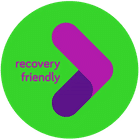Table of Contents
What housing options exist for individuals recovering from addiction?
Safe housing vs halfway houses: Recovering from addiction is an arduous journey, and the environment in which you live can significantly affect your progress. For those completing a treatment program or starting an outpatient one, having a safe and supportive space is vital, especially when home can’t always offer the right environment.
So, what housing options exist for individuals recovering from addiction? Safe housing and halfway houses are excellent alternatives, providing a place to continue the recovery process while being surrounded by a supportive community. These options offer stability and help avoid triggers that could lead to relapse.
In this GateHouse Treatment blog, we will explore the benefits of safe housing and halfway houses and highlight their differences. Whether you’re seeking information for yourself or a loved one, understanding these options can be the first step toward choosing the best support for a life free from addiction.
What is Safe Housing?
According to Mental Health America, only 15% of adults in the U.S. live alone, meaning most share their homes with family, friends, or housemates. While conflicts at home are common, ongoing fear, stress, and anxiety from a tense environment can indicate a problematic or even abusive situation.
Moreover, the location of your residence plays a crucial role in your physical safety and emotional well-being. Living in a dangerous neighborhood or with unsupportive people can seriously hinder your addiction recovery, jeopardizing your progress toward a substance-free life.

When we talk about safe housing, we refer to environments specifically designed to protect vulnerable or at-risk individuals, such as survivors of domestic violence, people recovering from addiction, or those who are homeless. These homes offer temporary shelter, providing a haven and access to resources that help individuals rebuild their lives. They often include counseling, support services, and assistance in finding long-term housing solutions. The goal is to create a hazard-free environment where people can make a fresh start in a secure and supportive space.
What Are Halfway Houses?
Halfway houses have a crucial role in the process of recovery of individuals transitioning from a rehabilitation program, mental health treatment, or even incarceration. These institutions offer a well-organized and supportive setting that assists in the process of reintegrating into society.
Moving to a halfway house offers individuals the chance to distance themselves from triggers associated with substance use, allowing them to focus on their recovery. These centers maintain a substance-free, healthy, and safe environment, which promotes recovery without external pressures.
Additionally, halfway houses often implement measures to ensure residents’ sobriety, such as regular drug testing. They also offer supplementary services like medical care, mental health support, and educational programs, helping residents rebuild their lives and reintegrate effectively into the community.
Safe Housing vs. Halfway Houses: Understanding the Differences
While safe housing and halfway houses share similarities, distinct differences set them apart:
- Purpose: Safe housing aims to provide a secure, stable environment for vulnerable or at-risk populations. Conversely, halfway houses support individuals transitioning out of institutions, such as rehabilitation centers, mental health facilities, or prisons, facilitating reintegration and preventing relapse or recidivism.
- Target Population: Safe housing serves vulnerable individuals like victims of violence or abuse, those recovering from addiction, and people experiencing homelessness. In contrast, halfway houses specifically target individuals recovering from substance use, undergoing mental health treatment, or seeking reintegration post-incarceration.
- Services Provided: Safe housing offers temporary shelter along with services such as counseling, legal support, and referrals to long-term housing options. Halfway houses provide a structured environment with drug testing, counseling, and educational services to support recovery and reintegration.
- Length of Stay: Safe housing typically offers short-term stays until individuals find a permanent housing solution and achieve stability. Halfway houses provide longer, more structured stays, ranging from a few months to over a year, depending on the individual’s progress in their recovery program.
- Environment: Safe housing prioritizes creating a secure and supportive environment free from external threats. Halfway houses focus on providing a sober, structured living environment where residents can develop life skills, adhere to rules, and gradually reintegrate into society.
- Sobriety Requirements: Requirements for sobriety in safe housing may vary depending on the type of housing and the population served. Halfway houses typically mandate that residents maintain sobriety, participate in drug testing, and engage in counseling as part of their recovery process.
- Community Support: Safe housing offers access to a community facing similar challenges, offering emotional and social support. Halfway houses emphasize community support and peer accountability as crucial elements of recovery, requiring residents to participate in group activities and programs that promote social reintegration.
Whether seeking safe and stable housing or a structured recovery environment, recognizing the unique benefits of each option is the first step toward a successful and sustainable recovery journey.
Finding Support at Integrative Healthcare Center

At Integrative Healthcare Center, we support your journey to sobriety. Whether you’re participating in our Intensive Outpatient Program (IOP) or our Outpatient Program (OP), our commitment is to provide the assistance you need to reenter society healthily and sustainably.
We recognize that your environment is crucial to your recovery. That’s why our team of professionals is here to help you find the most suitable living arrangement during this transformative period, whether it’s safe housing or a halfway house. You don’t have to go through this alone; we are here to help you regain control of your life and build a future free from substances.
If you’re ready to take the first step toward lasting sobriety, call us at (855) 448-3588 or contact us online. Never underestimate the impact of your environment on your recovery!
- Fentanyl Misuse: Awareness and Prevention - March 14, 2025
- High-Functioning Alcoholic: 5 Steps to Identify if You Are One of Them - February 23, 2025
- Rehab and Cancer Prevention: How Overcoming Addiction Reduces Risk - February 11, 2025




